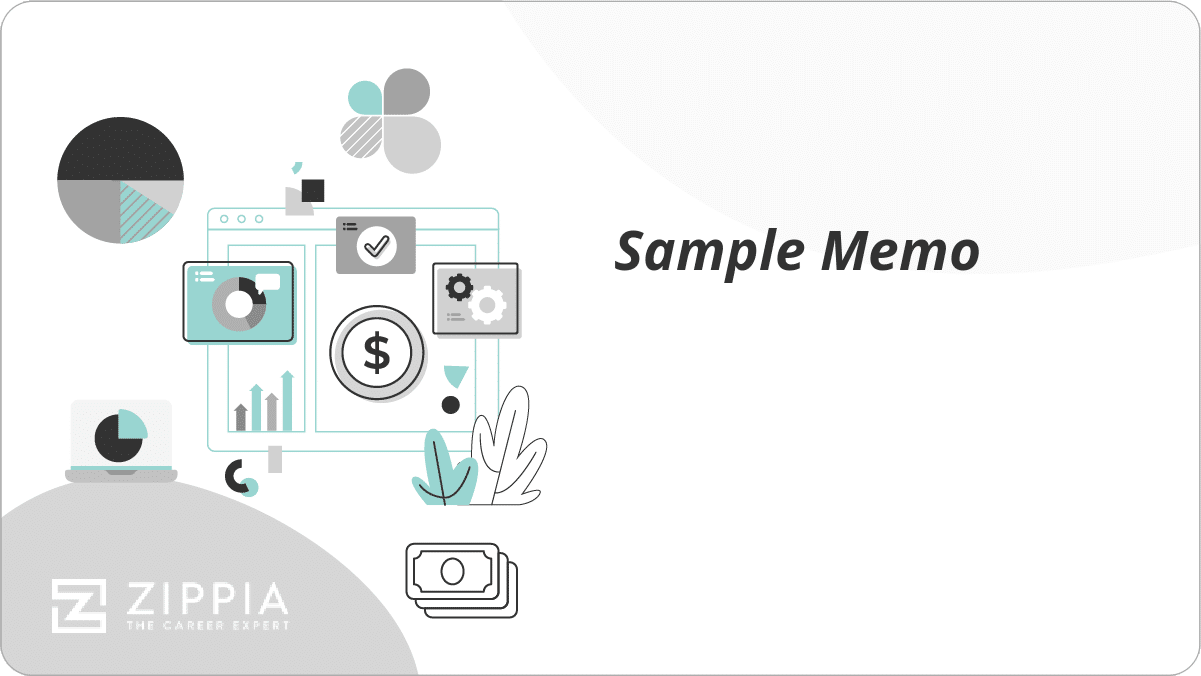- Office Etiquette
- Office Etiquette
- Dating A Coworker
- April Fools Pranks For Work
- How To Be A Good Employee
- Pet Peeves List
- How To Write A Project Proposal
- Qualities Of A Good Worker
- How To Get Along With Your Boss
- What Engaged Employees Do Differently
- What To Say Instead Of Sorry
- How To Send A Friendly Reminder Email
- How To End A Conversation
- Sorry For The Delay
- Tattoos In The Workplace
- Sorry For The Late Reply
- How To Respond To A Compliment
- New Employee
- How To Introduce Yourself Professionally
- Welcome New Employee Announcement
- Welcome Letter
- Thank You Note To Colleague
- 30/60/90 Plan
- Getting To Know You Questions
- Job Satisfaction
- Team Building Activities
- At Will Employment
- Company Culture
- Corporate Culture
- How To Succeed At Your New Remote Job
- How To Prepare For New Job Orientation
- How To Create An Employee Handbook
- Hostile Work Environment
- Hostile Work Environment
- How To Deal With A Difficult Coworker
- What Is Human Resource Development (HRD)?
- I Hate My Job
- Burnt Out At Work
- Condescending Coworker
- Sexual Harassment In The Workplace
- Work Environment
- My Job Sucks
- Favoritism At Work
- Respect In The Workplace
- Wagner Act
- Documentation In The Workplace
- Unconscious Bias
- Ageism
- What To Do When You Feel Unappreciated At Work
- How To Respond To A Warning At Work
- How To Deal With A Passive Aggressive Coworker
- What To Do When You're Unhappy At Work
- I Hate My Boss
- Gaslighting Boss
- Signs You're Underpaid
- Insubordination At Work
- Missing Work
- Communicating
- Send Retirement Wishes
- Write A Congratulations Email
- Professional Voicemail Greeting Examples
- Made A Mistake At Work
- Google Tricks
- Appeal Letter
- Employee Morale
- How To Write A Professional Email
- Out Of Office Message
- Small Group Icebreakers
- Memo Format
- Memo Examples
- Cell Phone At Work
- Meeting Minutes
- Communication Barriers
- How To Take Notes
- How To Brainstorm
- Ask For A Mental Health Day
- Transfer Request Letter And Email Examples
- How To Write A Business Proposal
- How To Deal With A Lazy Coworker
- How To Write A Rejection Letter
- How To Say No
- Scheduling
- Personal Goals
Find a Job You Really Want In
The term “memo” may sound dated in a world where email and text messages rule, but they are still valuable methods of communication — even if you do send them digitally now.
In this article, we’re going to go over the basics of memo writing, including the use of memos and the most common ways to format them. We’ll show you a sample memo as well so you can get a better idea of what yours should look like.
Key Takeaways
-
Memos are official forms of communication within an organization — usually to a group of people — used to share policy changes, team and project updates, or other more formal, permanent messages than those you’d send in an email or text.
-
It’s important to follow a standard memo format so that it looks professional and readers can find what they’re looking for quickly.
-
You can use memos to give a report, make a request, confirm a plan or decision, or ask for suggestions.

What Is a Memo?
Memos are a type of communication to share news, updates, or relevant information within a business. They’re typically short and to the point, since they can replace formal meetings and cover team updates, policy reminders, and quick corporate updates.
When thinking about whether you need to write a memo or not, think about what kind of information you’re sharing and its importance. Memos fall somewhere between formal professional letters and quick update emails.
If you want to just email or message a coworker, you probably don’t need to write a formal memo. If your information is a bit more important and many people inside and outside of your company will see it, a letter might be a better way to go.
Sample Memo
Here’s a sample memo for a team-wide update. This follows the general memo format and communicates the information as a report memo.
From: Jane Smith, HR Director
To: Product Development Department
Date: 1/20/21
Subject: Update on Product Development HiringDue to recent changes in hiring budgets, we are unable to continue the search for a new Product Designer as requested from the Product Development Department in November 2020. We will delay the search process until at least Q2 of 2021.
The administrative team has put a freeze on all hiring as the company’s finances are under review. We understand that the Product Development team put in a request for a new hire, and we began the preliminary search process in Q4 of 2020, but due to the current constraints, we are unable to continue with the process.
We will keep all of the resumes and applications that we have received on-file, then restart the search process when the administrative team allows us to proceed. Please feel free to reach out to my team and request the resumes if you’d like to start taking a look at candidates, but know that we cannot take the hiring process any further until the administrative team gives us the ok.
If there are any changes that you would like to make to the job description (attached below), please let us know.
Thank you for understanding the situation we’re in, and please let us know if we can do anything to support the Product Development team during this period. We will keep you updated on the process when anything changes.
(Here is where the job description can be attached)
Is a Memo Format Important?
Memos have their own unique type of communication, so following the memo format is important. Since most memos follow the general format, if you follow the standard practice, it’s easier for your recipients to scan the document and find the information that’s important to them.
It can also help you follow memo protocol since once you know it and understand the format; it is much easier to repeat the process and write up many memos.
How to Choose a Memo Format
There are a few types of memos that are commonly sent, so knowing which kind you’re writing is key to writing a clear and effective memo. The most popular types are report memos, request memos, confirmation memos, and suggestion memos. Each one has a different purpose and can change how you format your memo, so take a look and decide which is best for you.
-
Report memo. These are for giving an update on a project or sending out a progress report. You’ll need to include a project timeline and summarize where in the process you are, so think about what information you could convey in this format.
-
Request memo. If you need help from another teammate or a whole department, you should write a request memo. These typically need to explain the background of the project you’re working on, where you’re stuck, and how the other person or people can help you out.
You’ll need to explain the project or problem, so think about how much your recipient knows about the issue when writing it.
-
Confirmation memo. Suppose you want to get a plan or an agreement in writing; confirmation memos are a great way to do it. You can summarize your plan and delegate tasks in the memo so that everyone is on the same page and knows what’s going on in general and what their role is.
-
Suggestion memo. These can take many forms, but managers usually send them out to solicit feedback or suggestions from their employees. Sometimes managers need help figuring out the best solution to a problem, so these are a great way to outline the problem and ask other people for help.
Memo Format
No matter what kind of memo you’re writing, there’s one memo format that you can use to help you structure your note. You can switch up the sections as you need, but this template is a great way to make sure you get all of your information across in an organized manner:
-
Heading. Start with a professional heading that includes your name and job title, your recipient’s name and job title, the date, and the subject.
You should try to be precise with your subject title since your recipient might receive a lot of memos in a day, and if you get specific, they can know exactly what to expect from your memo.
-
Opening. Your first paragraph should state why you’re writing the memo, giving some context to your problem or message, and then explaining the update, task, or question you have.
Think of this section as a quick overview, so your reader knows what they’re going to read later in the memo. You can go more in-depth later but give a good summary and overview here.
-
Context. This is the place to go more in-depth and explain any background information that’s important to the goal of your memo. You can explain any jargon or technical terms, how your problem came about, or give context on the broader project you’re working on.
It’s important to keep your reader in mind when you’re writing this section. If you’re writing to a close teammate who’s worked on the whole project with you, you’ll need less background than if you were reaching out to someone from a different department who has never heard of your project.
-
Task section. Here’s where you can write out how you’re addressing the problem or preparing to take the next step of a project. You want to make sure you give a thorough explanation of what your task is, and you can ask other people to help out in this section.
If you don’t have a clear idea of what your next steps are, you should brainstorm a bit more and get a solid plan. Otherwise, you can ask your recipient to advise on the best next step.
-
Summary. If you have a lengthy memo, you might want to include a summary section. This can be a good way to remind your reader of the key points and actions. You only need a summary section if your memo is over a page or two, so don’t worry about including this part.
-
Discussion. Discussion sections are the bulk of a memo and include all of the facts, data, and details that support the rest of the memo. You can go in-depth here and provide as much information as you think is necessary to support your argument or request in the rest of the memo.
It’s a good idea to start with general information, then move into specific details and organize your thoughts from strongest to weakest support. This makes it easier for your reader to skim and understand the key parts of your argument.
-
Closing. Once you’ve written down everything you need to share, you can write a closing to reiterate all of your main points. This is a good section to include whatever actions you need your reader to take or any tasks that need to be completed after reading the memo.
Closings can be short since the summary section serves as a wrap up of everything you’ve written.
-
Additional attachments. If you have anything you want to include, like graphs, data, or extra information, you can include it as an additional attachment at the end of your memo. This part is optional, and you should only include things that are really necessary but don’t quite fit into your memo.
Memo FAQ
-
What is a memo PDF?
A memo PDF is a memo sent as a PDF. Many organizations and individuals prefer to send their memos as PDFs so that recipients can easily share and save the document and so that the formatting and message won’t be altered by computer programs or people.
-
Can a memo be two pages?
Yes, memos can be two pages. In fact, your memo may need to be two pages in order to be effective. Just make sure you’re consistent with your formatting across every page and include a summary or section headers in order to help readers find the information they need.
-
How do you end a memo?
You end a memo with a brief summary of the action the recipient needs to take after reading the memo. If you don’t end with this, your readers won’t remember what it is you’re asking them to do or won’t realize you’ve asked them to do anything.
- Office Etiquette
- Office Etiquette
- Dating A Coworker
- April Fools Pranks For Work
- How To Be A Good Employee
- Pet Peeves List
- How To Write A Project Proposal
- Qualities Of A Good Worker
- How To Get Along With Your Boss
- What Engaged Employees Do Differently
- What To Say Instead Of Sorry
- How To Send A Friendly Reminder Email
- How To End A Conversation
- Sorry For The Delay
- Tattoos In The Workplace
- Sorry For The Late Reply
- How To Respond To A Compliment
- New Employee
- How To Introduce Yourself Professionally
- Welcome New Employee Announcement
- Welcome Letter
- Thank You Note To Colleague
- 30/60/90 Plan
- Getting To Know You Questions
- Job Satisfaction
- Team Building Activities
- At Will Employment
- Company Culture
- Corporate Culture
- How To Succeed At Your New Remote Job
- How To Prepare For New Job Orientation
- How To Create An Employee Handbook
- Hostile Work Environment
- Hostile Work Environment
- How To Deal With A Difficult Coworker
- What Is Human Resource Development (HRD)?
- I Hate My Job
- Burnt Out At Work
- Condescending Coworker
- Sexual Harassment In The Workplace
- Work Environment
- My Job Sucks
- Favoritism At Work
- Respect In The Workplace
- Wagner Act
- Documentation In The Workplace
- Unconscious Bias
- Ageism
- What To Do When You Feel Unappreciated At Work
- How To Respond To A Warning At Work
- How To Deal With A Passive Aggressive Coworker
- What To Do When You're Unhappy At Work
- I Hate My Boss
- Gaslighting Boss
- Signs You're Underpaid
- Insubordination At Work
- Missing Work
- Communicating
- Send Retirement Wishes
- Write A Congratulations Email
- Professional Voicemail Greeting Examples
- Made A Mistake At Work
- Google Tricks
- Appeal Letter
- Employee Morale
- How To Write A Professional Email
- Out Of Office Message
- Small Group Icebreakers
- Memo Format
- Memo Examples
- Cell Phone At Work
- Meeting Minutes
- Communication Barriers
- How To Take Notes
- How To Brainstorm
- Ask For A Mental Health Day
- Transfer Request Letter And Email Examples
- How To Write A Business Proposal
- How To Deal With A Lazy Coworker
- How To Write A Rejection Letter
- How To Say No
- Scheduling
- Personal Goals





